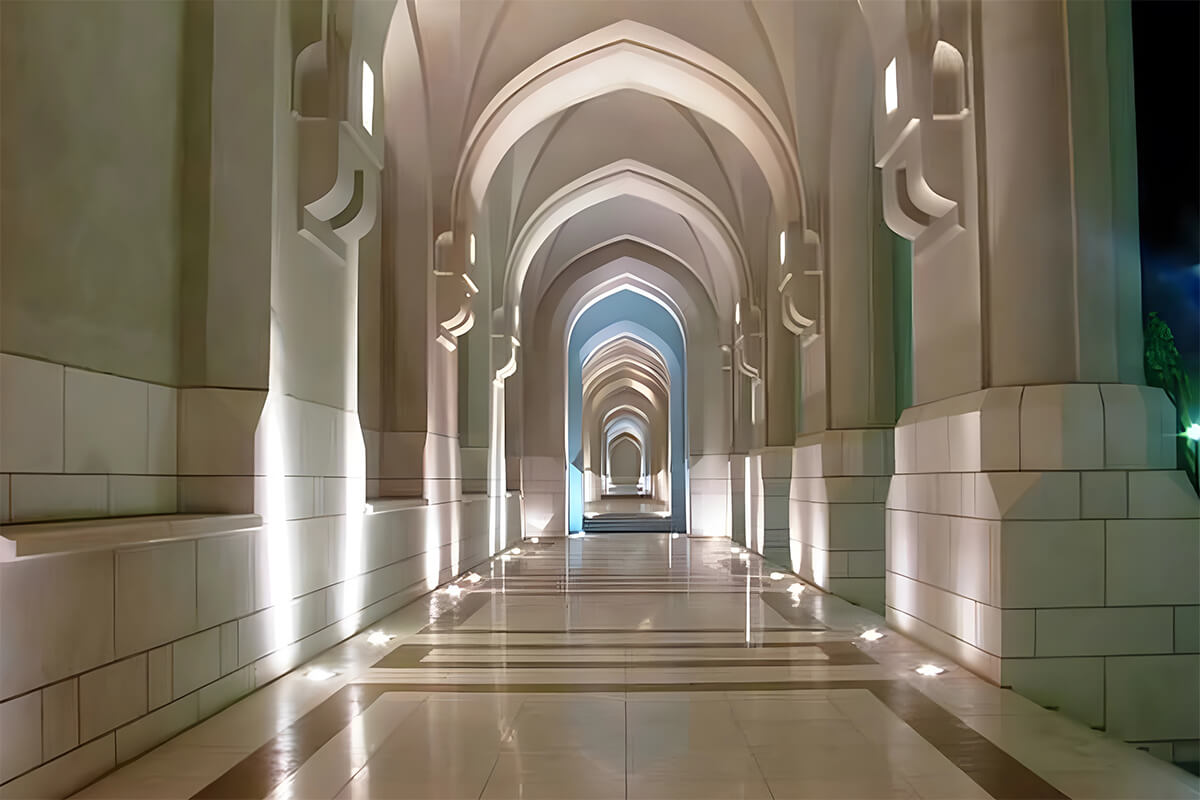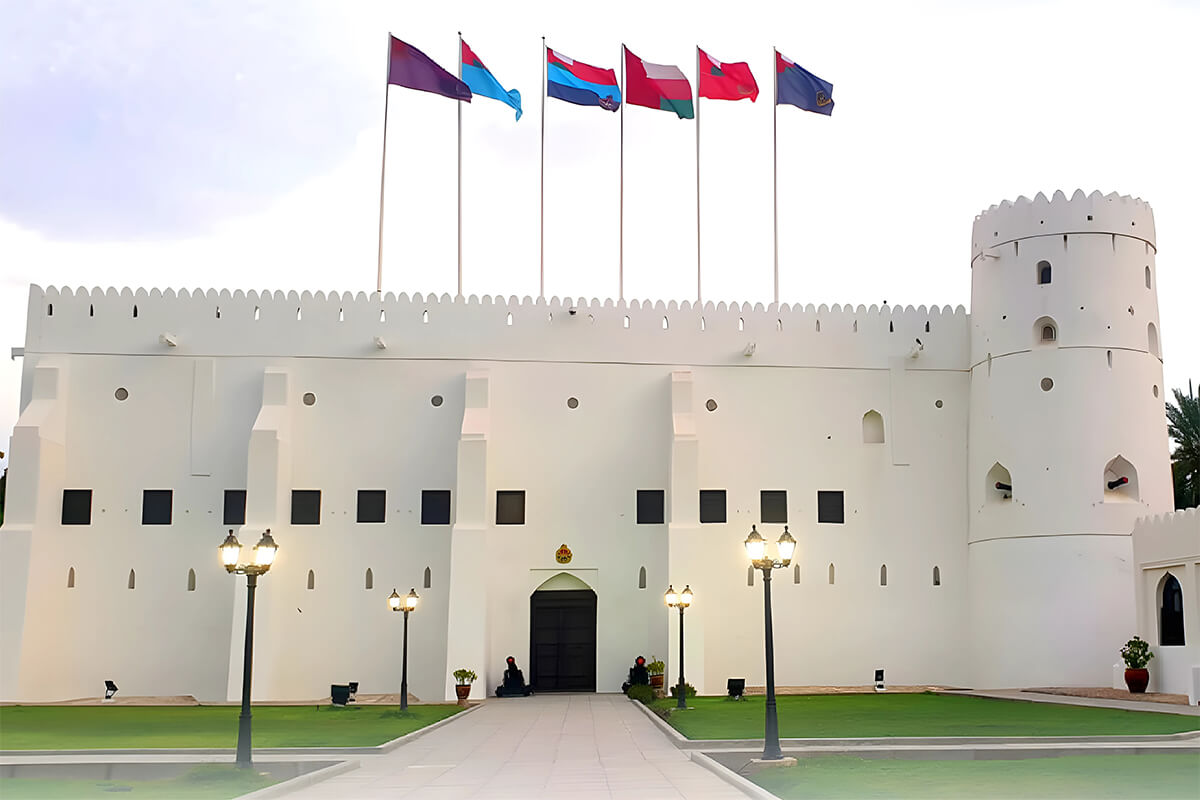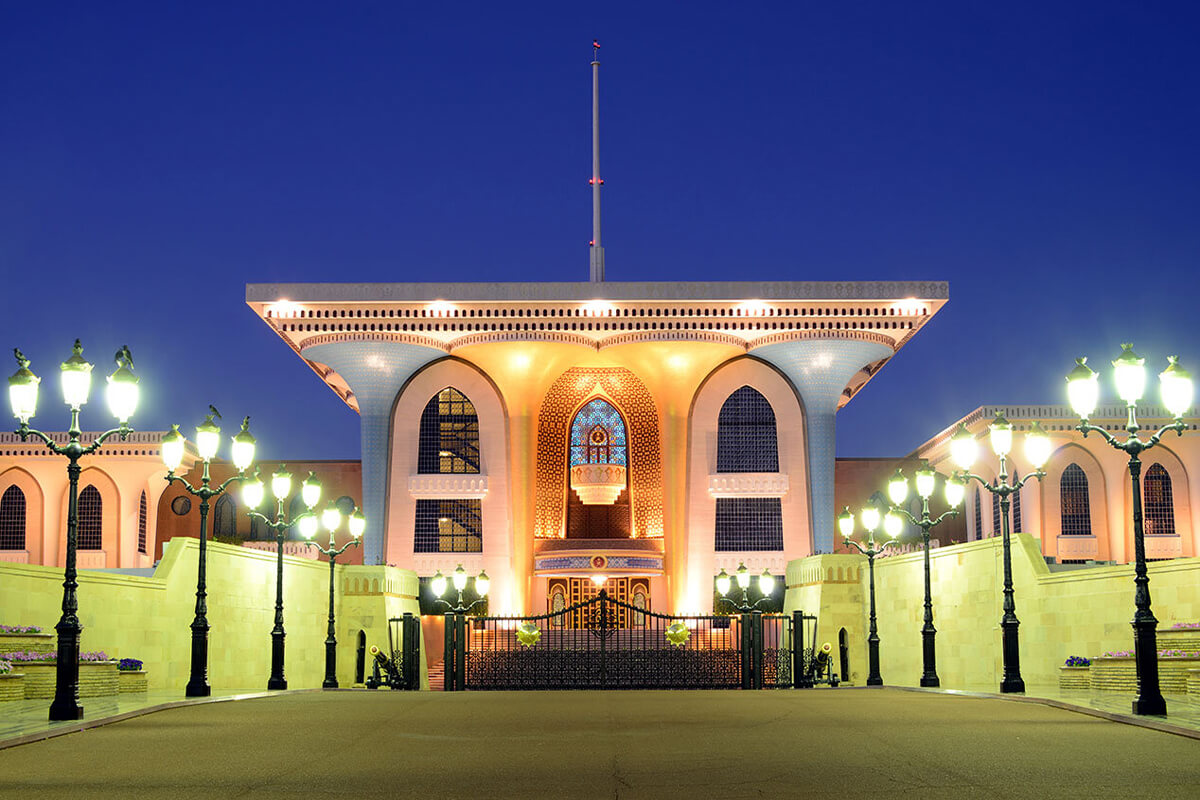Nestled in the heart of Muscat, Al Alam Palace Muscat stands as one of Oman’s Royal Palaces and most iconic landmarks. With its striking facade and deep historical significance, this royal residence is a must-visit destination for anyone exploring the Sultanate. As the ceremonial palace of the Sultan of Oman, Al Alam Palace Muscat is an architectural masterpiece that reflects the country’s rich heritage and modern elegance. Whether you are a history enthusiast, a lover of architecture, or a traveler seeking to experience Muscat landmarks, Al Alam Palace Muscat is a sight to behold.
The Rich History of Al Alam Palace
Al Alam Palace Muscat, meaning “The Flag Palace,” boasts a history that dates back over 200 years. The palace was originally built in the 18th century during the reign of Sultan Ahmed bin Said, the founder of the Al Busaidi dynasty, which still rules Oman today. Over the centuries, the palace has undergone multiple renovations, with its most notable transformation occurring in 1972 under the rule of Sultan Qaboos bin Said.
While Al Alam Palace Muscat is primarily used for ceremonial purposes and official receptions, it remains a significant symbol of the Sultanate of Oman’s governance and hospitality. It has hosted numerous dignitaries and world leaders, serving as a majestic representation of Oman’s diplomatic traditions and royal grandeur.
Architectural Brilliance of Al Alam Palace Muscat
One of the key attractions of Al Alam Palace Muscat is its breathtaking architecture. Unlike other traditional Middle Eastern palaces, Oman’s Royal Palace is distinguished by its modern Islamic design, featuring a unique blend of traditional Omani craftsmanship and contemporary influences. Some of the most notable architectural highlights include:
- A Striking Facade: The palace is adorned with vibrant blue and gold columns, symbolizing royalty and prestige.
- Arabesque Archways: The grand entrance and surrounding structures feature intricate Islamic patterns and geometric designs.
- Elegant Balconies and Windows: The palace showcases beautifully crafted balconies and arched windows that reflect Omani artistry.
- Lush Gardens and Landscapes: The surrounding area is meticulously maintained with lush green gardens, adding to the palace’s enchanting atmosphere.
The fusion of traditional and modern elements makes Al Alam Palace Muscat one of the most photogenic Muscat landmarks, attracting thousands of visitors who admire its grandeur from the outside.

Can Visitors Enter Al Alam Palace Muscat?
Although Al Alam Palace Muscat is not open to the public, visitors can still enjoy its majestic beauty from the palace gates and surrounding areas. The best way to experience the palace is by walking around Al Alam Palace Square, which offers stunning views of the palace’s grand exterior and its picturesque setting.
Visitors can also explore the nearby government buildings and historical forts, which complement the grandeur of Al Alam Palace Muscat. The area provides excellent opportunities for photography, allowing travelers to capture the essence of Oman’s Royal Palace and its regal charm.
Best Time to Visit Al Alam Palace Muscat
The best time to visit Al Alam Palace Muscat is during the cooler months, from October to April. During this period, the weather in Muscat is pleasant, making it ideal for sightseeing and photography. The palace looks particularly enchanting during the early morning and late afternoon, when the soft sunlight enhances its golden hues.
If you happen to visit during a national celebration or royal event, the area surrounding Al Alam Palace Muscat may feature special decorations and illuminations, adding to the overall grandeur of the experience.
Nearby Attractions to Explore
While visiting Al Alam Palace Muscat, travelers can explore several nearby Muscat landmarks that complement their royal experience. Many of these sites are featured in Oman tours, making it easy to plan a full day of exploration:
- Al Jalali and Al Mirani Forts: These two historic forts flank Al Alam Palace Muscat and offer stunning views of the harbor and surrounding landscapes.
- Muscat Gate Museum: A fascinating museum that provides insights into Oman’s rich history and architectural evolution.
- Mutrah Corniche: A scenic waterfront promenade with breathtaking views of the Arabian Sea.
- Bait Al Zubair Museum: A cultural museum showcasing Omani heritage, including traditional attire, weaponry, and historical artifacts.
- Sultan’s Armed Forces Museum: A must-visit for history enthusiasts interested in Oman’s military past.

Essential Travel Tips for Visiting Al Alam Palace Muscat
- Dress Modestly: Oman is a country that values modest attire, so visitors should dress appropriately when exploring the palace surroundings.
- Visit During the Day: The palace is best enjoyed in daylight when its striking colors and architecture stand out.
- Photography is Allowed: While visitors cannot enter the palace, they can take pictures from outside. The best spots for photos are along the palace gates and Al Alam Palace Square.
- Combine Your Visit with Other Attractions: Since Al Alam Palace is located in Old Muscat, it’s recommended to plan a full day of sightseeing around the area.
Why Al Alam Palace Muscat is a Must-Visit Destination
Al Alam Palace Muscat is more than just a royal residence; it is a symbol of Oman’s rich heritage, cultural pride, and architectural excellence. Whether you admire its unique design, appreciate its historical significance, or simply enjoy the serene atmosphere surrounding it, a visit to Al Alam Palace Muscat offers a glimpse into Oman’s regal legacy.
With its prime location, stunning backdrop, and proximity to other historic sites, Al Alam Palace Muscat stands as a royal gem in the heart of Oman, offering visitors an unforgettable experience of elegance, history, and cultural richness.
Plan your visit today and explore this architectural wonder as part of enriching Oman tours!


0 Comment